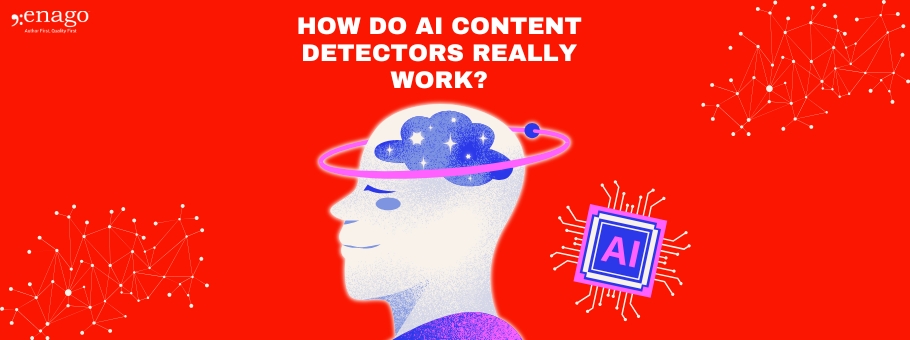What If You Could Explore, Store, and Read Scholarly Research Data on a Single AI-based Platform?

“How am I supposed to organize all this information?”
“How should I prioritize which paper to read first?”
These are some of the thoughts that run through a researcher’s mind when they begin a scholarly research paper or a literature review. You begin to think that you’re doing something wrong or that there’s either no information on your topic or only irrelevant information.
Furthermore, what worsens it is:
- Having to browse through several scholarly databases (even if you do not find the information you need).
- Downloading all the papers you find, and saving them in reference managers (which may or may not accept files in all formats).
- Not to mention going through the title, abstracts, and conclusion of countless downloaded papers only to realize that the information is not even remotely related to your research.
Imagine the disappointment from having spent so many hours and not finding anything relevant when you could have done something more productive.
What if there are possibilities of an AI-based tool that could search, save, and help you prioritize relevant papers, all on a single platform?
Keep reading to find out.
What Are the Major Challenges in Exploring Scholarly Databases on Multiple Platforms?
Over the past decades, the scientific community has experienced both, a paucity of data and rapid growth in the volume of available data for research—popularly described as data deluge. However, the exponential increase in volumes of literature and content modalities has triggered the challenge of harnessing web-based resources while writing research papers.
Earlier, researchers would depend on their university libraries to review pertinent literature. But with advancing time and technology, research data can be found on search engines, social media platforms, online journals, conferences, news bulletins, and so many other places. While this brings opportunities to explore more research, the challenge here is finding the relevant information, saving it in accessible formats, managing the resources, prioritizing papers to read, and so on.
Are Present Scholarly Databases Enough For Researchers’ Needs?
In today’s data-rich environment, researchers face difficulties in tracking, managing, and reading relevant data from downloaded papers. While researchers conduct web searches to find research data using multiple scholarly databases, they have to keep toggling among several tools to search, save, manage, and read downloaded research data. Despite the advances in computational and networking technologies, present-day scholarly databases do not efficiently and precisely discover data that meets a researcher’s needs. Furthermore, even if relevant data is obtained, they have to save it in a different tool, which may or may not store data in all accessible formats. And with the vast amount and variety of data stored, organizing and prioritizing literature to read and review becomes an arduous job.
So, what is the solution to these challenges faced by researchers? What if there was one tool that could solve all these problems and save precious researcher time!
Will a Single Platform Enable Efficient and Precise Literature Review?
Researchers spend an immoderate amount of time finding the right information for literature review. However, the time and effort put into writing one literature review could potentially account for the time and effort required to conduct several research experiments.
A single platform to conduct literature review is advisable because
- It will allow researchers to navigate through different papers, especially for cross-disciplinary research.
- A simplified way of discovering, saving, organizing, annotating, sharing, and reading the downloaded literature.
- Since all the research data is on one platform, they can quickly skim through saved papers and decide if the papers are worth reading.
- Such a platform can also assist them in speeding up their paper prioritization process.
- Researchers can search, save, read, and take notes at the same time avoiding the hassle of switching between scholarly search engines, reference managers, annotation tools, etc.
- They will not have to refine their search queries multiple times and lose out on the initial point of the search.
What Are the Ways in Which a Single Tool Can Transfigure the Traditional Practices of Exploring, Storing, and Reading Research Data?
Information overload, misinformation, poorly designed navigation, insufficient data access, etc. are just a few points to consider that will hamper a researcher’s literature review. Additionally, due to restricted access or in-browser fees, many researchers rely on only one or two databases, which leads to losing out on a comprehensive review of pertinent literature.
A tool that allows data search, collation, organization, and also supports in evaluating the papers to read is the solution to all problems during the literature review.
Here’s How an AI-based Tool Can Ease the Literature Review Process:
- Information overload can be avoided by selecting niche terms to find relevant literature.
- A reliable database that finds all the literature exactly related to your topic and doesn’t discuss only one aspect of it.
- Web-based information from published research papers, conferences, lectures, survey reports, books, preprints, etc. will be available on one platform.
- Well-organized information storage and management will help researchers sort research data and arrange them as per their convenience.
- Navigation of e-journal websites can be eliminated and discovered data can be saved for reading later.
- Quick skimming of saved papers can allow prioritizing papers to read, while discarding irrelevant papers.
- Additional costs, multiple journal subscriptions, and log-ins can be avoided.
- Annotating papers becomes easier on one platform as compared to switching between several databases and annotating tools.
As researchers consume humongous amounts of information from several sources—journal articles, books, theses, databases, conferences, and preprints, to name a few, there is a need for harnessing this web-based information, managing it, and reading only what’s relevant.
With this ever-increasing plethora of scholarly information, not all of it will be suitable for your research. So as you are grasping at straws while toggling among several databases, reference managers, or annotating tools, an all-in-one AI-based reliable tool would be your savior from all the hassle.
Have you ever thought of this before? Does this sound surreal to you? What if there’s a tool out there that you aren’t aware of? Let us know your thoughts in the comments section below!








